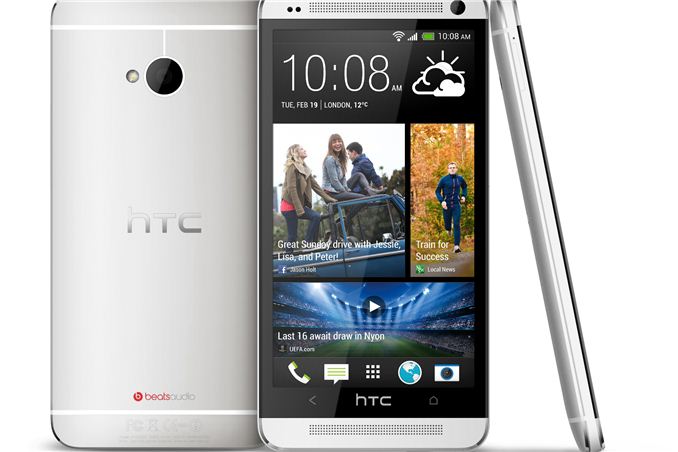How the HTC One's Camera Bucks the Trend in Smartphone Imaging
by Brian Klug on February 22, 2013 5:08 PM EST- Posted in
- Smartphones
- HTC
- Mobile
- HTC One

Now that we’ve seen the HTC One camera announcement, I think it’s worth going over why this is something very exciting from an imaging standpoint, and also a huge risk for properly messaging to consumers.
With the One, HTC has chosen to go against the prevailing trend for this upcoming generation of devices by going to a 1/3.0" CMOS with 2.0 micron pixels, for a resulting 4 MP (2688 × 1520) 16:9 native image size. That’s right, the HTC One is 16:9 natively, not 4:3. In addition the HTC One includes optical image stabilization on two axes, with +/- 1 degree of accommodation and a sampling/correction rate of 2 kHz on the onboard gyro. Just like the previous HTC cameras, the One has an impressively fast F/2.0 aperture and 5P (5 plastic element) optical system. From what I can tell, this is roughly the same 3.82 mm (~28mm in 35mm effective) focal length, slightly different from the 3.63 mm of the previous One camera. HTC also has included a new generation of ImageChip 2 ISP, though this is of course still used in conjunction with the ISP onboard the SoC, and HTC claims it’s able to do full lens shading correction for vignetting and color, in addition to even better noise reduction, and realtime HDR video. Autofocus is around 200ms for a full scan, I was always impressed with AF speed the previous cameras had, this is even faster. When it comes to video HTC apparently has taken some feedback to heart and finally maxed out the encoder capabilities for the APQ8064/8064Pro/8960 SoC, which is 20 Mbps H.264 high profile.
| HTC One Camera Specifications | ||||
| Device | HTC One | |||
| Sensor Size and Type | 1/3" BSI CMOS | |||
| Resolution | 4.0 MP 16:9 Aspect Ratio (2688 x 1520) | |||
| Focal Length | 3.82mm | |||
| F/# | F/2.0 | |||
| Optical System | 5P | |||
| OIS | 2-axis +/- 1 degree, 2 kHz sampling | |||
| Max Capture Rate | 8 FPS continual full res capture | |||
| Video Capture |
1080p30, 720p60, 720p30, 1080p28 HDR, 768x432 96FPS H.264 High Profile, 20 Mbps |
|||
The previous generation of high end smartphones shipped 1.4 micron pixels and a CMOS size of generally 1/3.2“ for 8 MP effective resolution. This year it seems as though most OEMs will go to 1.1 micron pixels on the same 1/3.2” size CMOS and thus get 13 MP of resolution, or choose to stay at 8 MP and absorb the difference with a smaller 1/4" CMOS and thinner optical system. This would give HTC an even bigger difference (1.1 micron vs 2.0 micron) in pixel size and thus sensitivity. It remains to be seen whether other major OEMs will also include OIS or faster optical systems this generation, I suspect we’ll see faster (lower F/#) systems from Samsung this time, some rumored images showed EXIF data of F/2.2 but nothing else insightful. Of course, Nokia is the other major OEM pushing camera, but even they haven’t quite gone backwards in pixel size yet, but they’ve effectively been in a different category for a while. We’ve already seen some handset makers go to binning (combining a 2x2 grid of pixels into one effective larger pixel) but this really only helps increase SNR and average out some noise rather than fundamentally increase sensitivity.
The side by sides that I took with the HTC One alongside a One X so far have been impressive, even without final tuning for the HTC One. I don’t have any sample images I can share, but what I have seen has gotten me excited about the HTC One in a way that only a few other devices (PureView 808, N8, HTC One X) have so far. Both the preview and captured image were visibly brighter and had more dynamic range in the highlights and shadows. So far adding HDR to smartphones has focused not so much on making images very HDR-ey but rather as a mitigation to recover some dynamic range and make smartphone images look more like what you’d expect from a higher end camera. Moreover, not having to use flash in low light situations is a real positive, something which currently adds a false color cast if you’re using a device with an LED.













22 Comments
View All Comments
evonitzer - Wednesday, February 27, 2013 - link
There are a lot of good questions in this thread, but to use a cliche, "The proof is in the pudding." Wait until it comes out and then let's evaluate (and meet up again in the comments to argue about which photos look better).Stoli89 - Thursday, February 28, 2013 - link
There's already a couple of test videos on Youtube showing the HTC One against both the Lumia 920 (8.7 MP, 1/3 BSI sensor, OIS across full camera module, F.2.0, Carl Zeiss optics) and the Lumia 720 (6.7MP, 1/3.6 BSI sensor, F1.9, Carl Zeiss optics).From the video it's clear that the HTC ONE produced very noisy, grainy images compared to BOTH Lumias. I was particularly impressed with the 720's performance, considering this non-OIS camera was able to deliver pretty decent low light shots as a mid-priced phone! The 720 may not have "ultra' pixels, but it does seem to make the most out of a very large aperture, excellent optics, and stellar algorithms.
To note, the comparisons were conducted inside HTC's dark room, at its stand at MWC 2013.
http://www.youtube.com/watch?v=bIFCJLVuqOs